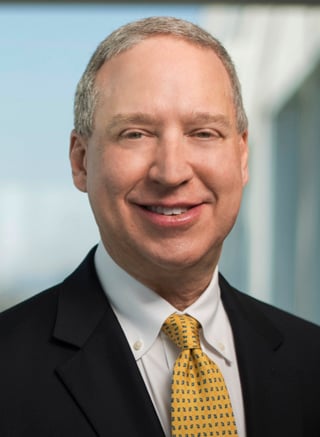SECURE 2.0: Retirement Plan Changes for 2024
Employee Benefits Alert
The SECURE 2.0 Act of 2022 sets forth a number of changes affecting retirement plans that go into effect over several years. This article focuses on key changes for 2024 that may be implemented.
- Mandatory Distributions. Under current law, employers may transfer former employees’ retirement accounts from a retirement plan to an individual retirement account (IRA) if their balances are greater than $1,000 but no greater than $5,000. The act increases the limit from $5,000 to $7,000, effective for distributions made after December 31, 2023.
- Withdrawals for Emergency Expenses. Generally, an additional 10% tax applies to early distributions from tax-preferred retirement accounts, such as 401(k) plans and IRAs, unless an exception applies. The act provides an exception for certain distributions used for emergency expenses, which are “unforeseeable or immediate financial needs relating to personal or family emergency expenses.” Only one distribution is permissible per year of up to $1,000, and a participant has the option to repay the distribution within three years. No further emergency distributions are permissible during the three-year repayment period unless repayment occurs. This provision is effective for distributions made after December 31, 2023.
- Emergency Savings Accounts. The act permits a plan sponsor to amend its plan to offer short-term emergency savings accounts (ESAs) as part of a defined contribution plan. ESAs must be funded post-tax with Roth contributions, and participants may be automatically enrolled at a rate of up to 3% of compensation. Contributions are capped at $2,500 (indexed for inflation) or a lower amount determined by the sponsor, and there cannot be minimum contribution or balance requirements. Participants must be allowed to take at least one withdrawal per month; the first four withdrawals per year cannot be subject to fees. ESAs may be invested in cash, interest-bearing deposit accounts, and principal preservation accounts. There is a fiduciary safe harbor for automatic enrollment. These accounts may be established for plan years beginning after December 31, 2023.
- Withdrawals Relating to Domestic Abuse. The act allows retirement plans to permit participants to self-certify that they experienced domestic abuse and withdraw the lesser of $10,000 (indexed for inflation) or 50% of the participant’s account. The distribution is not subject to the 10% tax on early distributions. Additionally, the participant may recontribute the withdrawn money over three years and will be entitled to a refund for income taxes on money that is repaid. This is also effective for distributions made after December 31, 2023.
- Student Loan Payments as Deferrals for Matching Contributions. The act permits an employer to make matching contributions under a 401(k) plan, 403(b) plan, governmental 457(b) plan, or SIMPLE IRA with respect to “qualified student loan payments.” A qualified student loan payment is broadly defined as any indebtedness incurred by the employee solely to pay qualified higher education expenses of the employee. For purposes of the nondiscrimination test applicable to elective contributions, the plan may test separately the employees who receive matching contributions on student loan repayments. This change is effective for contributions made for plan years beginning after December 31, 2023.
- Hardship Distributions in 403(b) Plans. The act conforms the hardship distribution rules for Section 403(b) plans to those of Section 401(k) plans. As such, a 403(b) plan may distribute qualified nonelective contributions, qualified matching contributions, and earnings on any of these contributions (including elective deferrals). Also, distributions from a 403(b) plan are not treated as failing to be made upon hardship solely because the employee does not take available loans. This change is effective for plan years beginning after December 31, 2023.
Depending on the form of the plan, these changes will likely require a plan amendment. Employers should check with their plan document provider regarding amendments. They should also check with their third-party administrators regarding implementation of the changes. Third-party administrators may not be able to implement all optional changes in 2024.
If you have any questions about SECURE 2.0 or other benefits matters, please contact one of the attorneys in the Employee Benefits and Executive Compensation Practice Group at Bradley.

